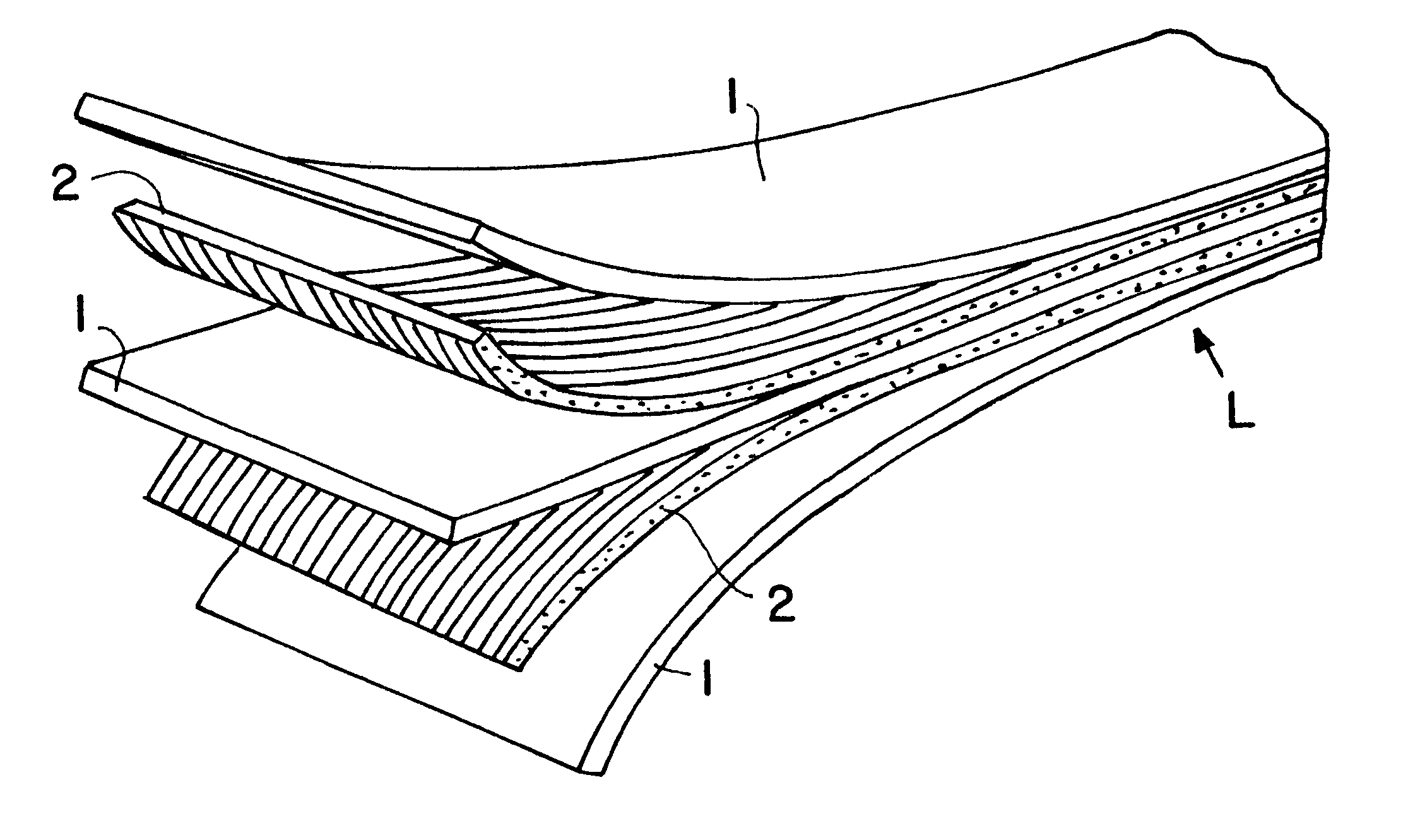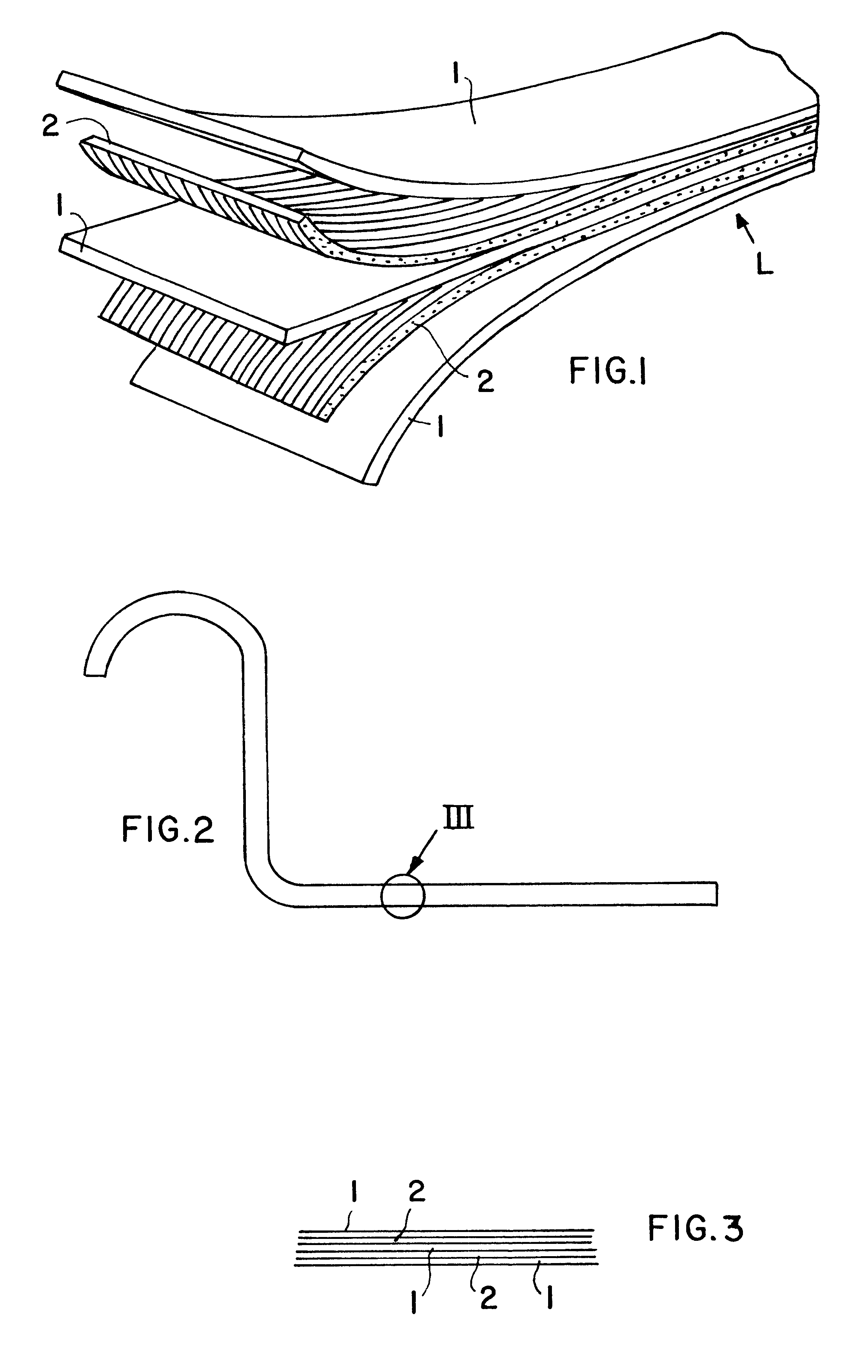Method of manufacturing a profile member of a hybrid composite material
a technology of hybrid composite materials and profile members, which is applied in the direction of manufacturing tools, wood veneer joining, synthetic resin layered products, etc., can solve the problems of limited application of such methods for fabricating profile members for aircraft construction, and not suitable for all possible uses or purposes
- Summary
- Abstract
- Description
- Claims
- Application Information
AI Technical Summary
Problems solved by technology
Method used
Image
Examples
Embodiment Construction
The initial layer structure L shown in FIG. 1 comprises plural precut blanks in the form of metal strips 1 and composite prepreg strips 2, which are alternately stacked, one on another, to essentially any desired number to form the layer structure L having the required thickness and other characteristics. Each of the precut blanks has been prepared in prior processing steps, for example cleaning the metal material, pre-impregnating the fiber-reinforced composite material, and cutting the respective materials into the required dimensions of an elongated strip shape. The metal strips 1 can be fabricated from any appropriate metal material, such as sheet metal of aluminum alloys or titanium alloys, as appropriate for the desired end utilization. The prepreg strips 2 are fabricated from a fiber-reinforced composite material including reinforcing fibers, such as carbon fibers, graphite fibers, glass fibers, aramid fibers or other fibers impregnated with a suitable resin or other thermall...
PUM
| Property | Measurement | Unit |
|---|---|---|
| pressure | aaaaa | aaaaa |
| temperature | aaaaa | aaaaa |
| temperature | aaaaa | aaaaa |
Abstract
Description
Claims
Application Information
 Login to View More
Login to View More - Generate Ideas
- Intellectual Property
- Life Sciences
- Materials
- Tech Scout
- Unparalleled Data Quality
- Higher Quality Content
- 60% Fewer Hallucinations
Browse by: Latest US Patents, China's latest patents, Technical Efficacy Thesaurus, Application Domain, Technology Topic, Popular Technical Reports.
© 2025 PatSnap. All rights reserved.Legal|Privacy policy|Modern Slavery Act Transparency Statement|Sitemap|About US| Contact US: help@patsnap.com


